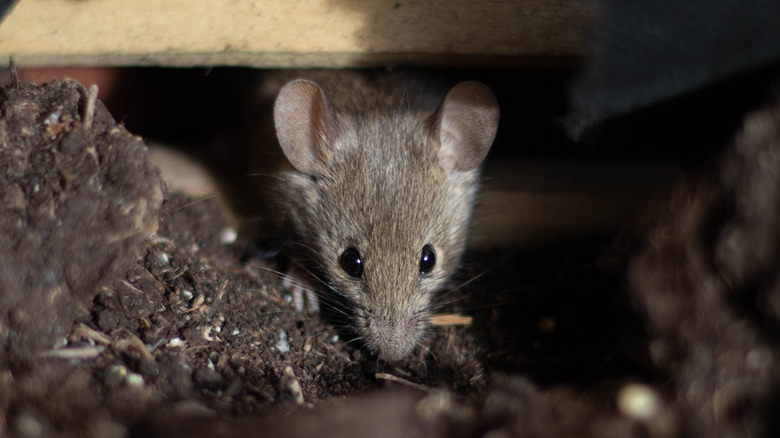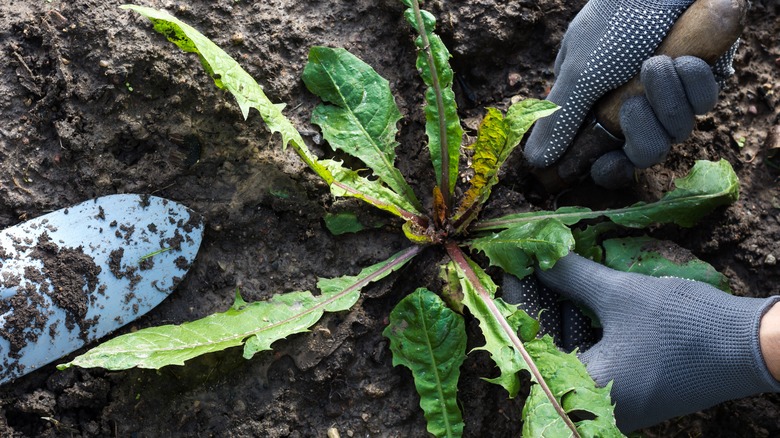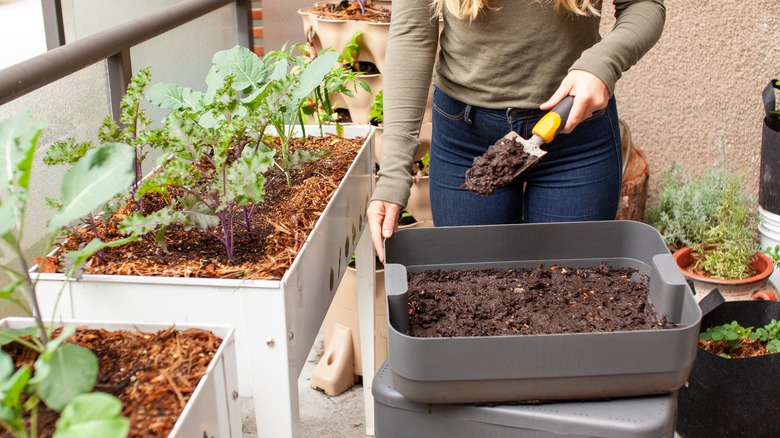Growing These Vegetables In Your Garden Could Result In A Major Mouse Problem
While we humans are happily huddled indoors during the cooler winter months, sipping cocoa by the fireplace, your garden could be playing host to an annual invasion of mice. These mischievous rodents transform your once-pristine garden beds into an all-you-can-eat buffet, and if you've got certain types of seed or fruit-bearing plants around your home, that's like an open invitation to these little critters to come chow down. Mice tend to seek refuge indoors when temperatures plummet, and they're not just looking for warmth. If they find a plentiful food source and a perfect spot to hunker down in, you can expect that they might even decide to move in and start a family.
Out in the wild, mice usually nosh on seeds, nuts, berries, plants, and the occasional tiny insect as their go-to meals. But certain plants are like magnets for mice because of their smell or taste, or because they offer great hiding spots and also provide them with a good source of protein and carbohydrates. Plants that produce seeds or nuts, like sunflowers and corn, are the real crowd-pleasers for these little critters. So if you also happen to have a bird feeder on your property, you might want to second guess having that around if you're being outnumbered by mice.
It's not just seeds and fruits
Plants that produce seeds or nuts, like sunflowers and corn, are particularly appealing to mice. But obviously, if you have fruit trees on the premises, those are definitely fair game. Blueberries, raspberries, blackberries, apples, pears, and strawberries are like a mouse's dream dessert. They won't even wait for the strawberries to ripen fully before digging in. To give those mice a culinary disappointment, make sure you promptly pick ripe fruit and get rid of any fallen or rotting ones. Mice are all about nuts because they're high in fats and protein. If you've got nut trees in your yard, that's an easy meal that can also grant them access to gutters or other ways to get into your house.
If you've let a few weeds hang around your garden, you might want to eliminate those guys as soon as possible. They're not just an eyesore that can choke out your fruits and veggies, but certain weeds are like fast food to these little rodents. Root veggies and tubers, like potatoes, beets, and carrots, might seem like they're safely buried underneath the soil. But mice absolutely love these low-growing or underground treats and will conveniently snack on them, then return to their home base, which could be in your home. Freshly planted bean and pea seedlings are sweet and delicate, and will be quickly destroyed by a mouse nest.
There are a few workarounds
Luckily, there are quite a few different ways to keep mice from treating your garden like their own personal pantry. You can grow plants like mint or marigolds around plants that have a high penchant for getting eaten. It's thought that mice and other rodents dislike strong scents, though this is just a theory. These critters can be found living in rather pungent areas, like garbage bins and compost piles, so this might not be 100 percent foolproof. Alternately, consider using wire mesh or fencing buried in the ground to create barriers that deter burrowing. Raised garden beds are a great option too, since they make it tough for mice to reach your plants.
Don't forget to keep your garden clean by removing fallen leaves and debris, as well as any produce, seeds, or nuts that have hit the ground. Try sprinkling some natural repellents like salt, cayenne pepper, or onions around the base of your plants. Keep in mind that too much salt can disrupt the nutrient levels of your soil. If mice do make an appearance, you can set up humane traps to catch and release them away from your garden. Regularly inspect your garden for mouse signs, like burrows or gnawed plants, to catch any issues early. Lastly, seal any cracks or gaps around your home to prevent mice from trying to sneak into your home after having raided your garden.


